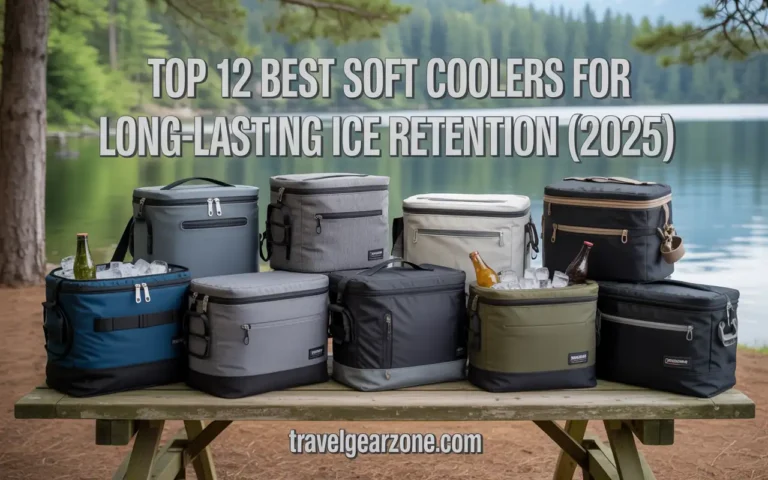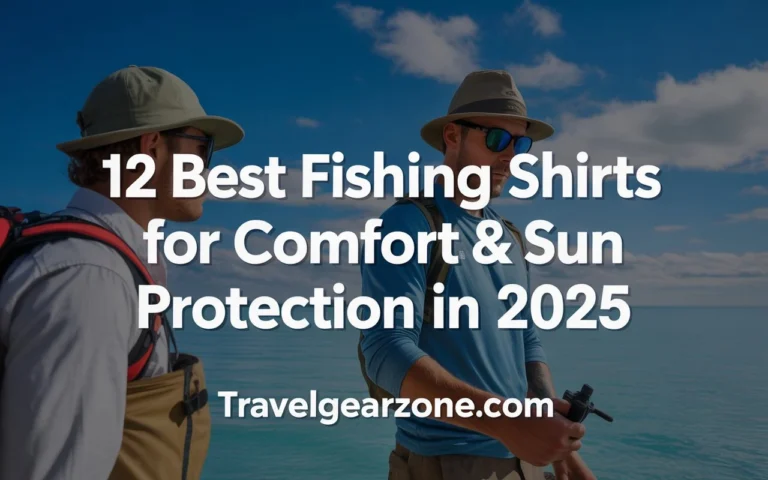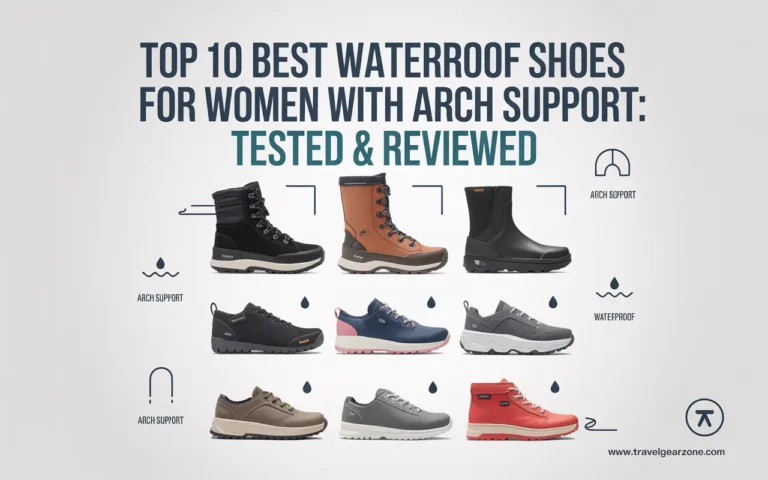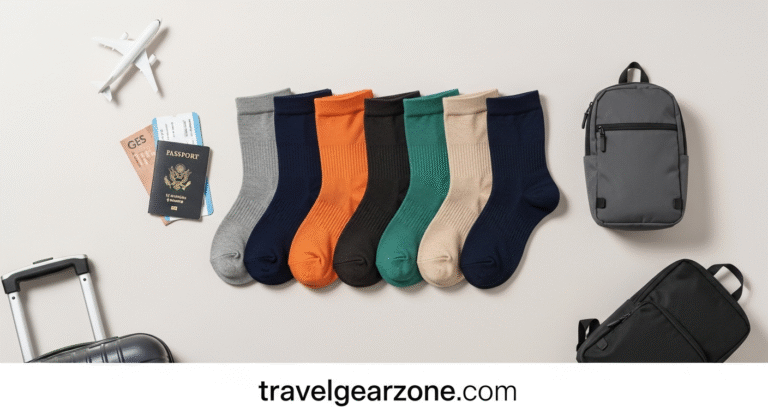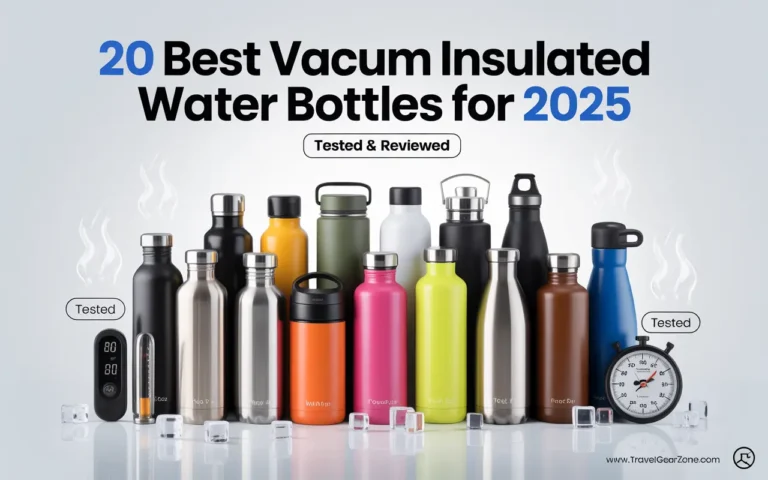15 Affordable Travel Accessories for Long Haul Flights You’ll Love
I’ve lost count of how many times I’ve been stuck in the middle seat on a 12-hour haul, knees cramped, neck sore, and desperately wishing I had packed smarter. Over the years, I’ve learned that travel accessories for long haul flights aren’t luxuries—they’re survival tools. Whether you’re flying from New York to Tokyo or London to Cape Town, the small things you carry onboard can transform the journey from miserable to manageable.
During my early years of backpacking, I used to skimp on gear, telling myself that I didn’t need “extras.” But after my third flight from Istanbul to Bangkok—14 hours in economy—I realized how wrong I was.
The right accessories don’t just make you comfortable; they protect your health, keep you sane, and save you from relying entirely on whatever the airline decides to provide.
That’s why I’ve curated this list of affordable travel accessories for long haul flights that I’ve personally tested, often after long nights wandering duty-free shops or comparing notes with other seasoned travelers at airport lounges.
Here’s the promise: you don’t need to spend a fortune to feel human after a red-eye. These picks range from $10 to $50, but they’ll feel priceless once you’re halfway over the Pacific.
If you’ve ever asked yourself what to wear on a long haul flight, what to carry on long haul flights, or how to stay comfortable in economy, this guide has you covered. By the end, you’ll know exactly which travel accessories for long haul flights are worth slipping into your carry-on.
What to Look for in Travel Accessories for Flights
Not every shiny product marketed as a “flight essential” actually earns its spot in your bag. After more than a decade of long-haul travel, I’ve found that the best travel accessories share a few common traits.
Affordability vs. quality: The sweet spot is gear that holds up after multiple trips without draining your wallet. A $25 neck pillow that lasts five years is far better than a $10 one that loses shape after a single flight.
Practicality: Long haul flights demand efficiency. Look for compact, lightweight, and multi-use items—like a travel blanket that doubles as a shawl or a collapsible water bottle that tucks neatly into a side pocket.
Health and comfort: On flights from Doha to Sydney, I’ve seen firsthand how compression socks prevent swelling, how ergonomic pillows reduce neck pain, and how noise-canceling gear makes rest possible in crowded cabins. Accessories aren’t just about luxury; they’re wellness tools.
Technology and convenience: Between charging solutions, travel tech organizers, and simple hacks like tablet stands, tech-friendly accessories keep your devices alive and your sanity intact when you’re 10 hours in and the in-flight entertainment freezes.
Above all, the best choices come from repeated trial, trusted reviews, and conversations with fellow travelers. A good accessory proves its worth not in the store, but at 35,000 feet when you need it most.
The 15 Affordable Travel Accessories You’ll Love
1. Neck Pillow with Ergonomic Support
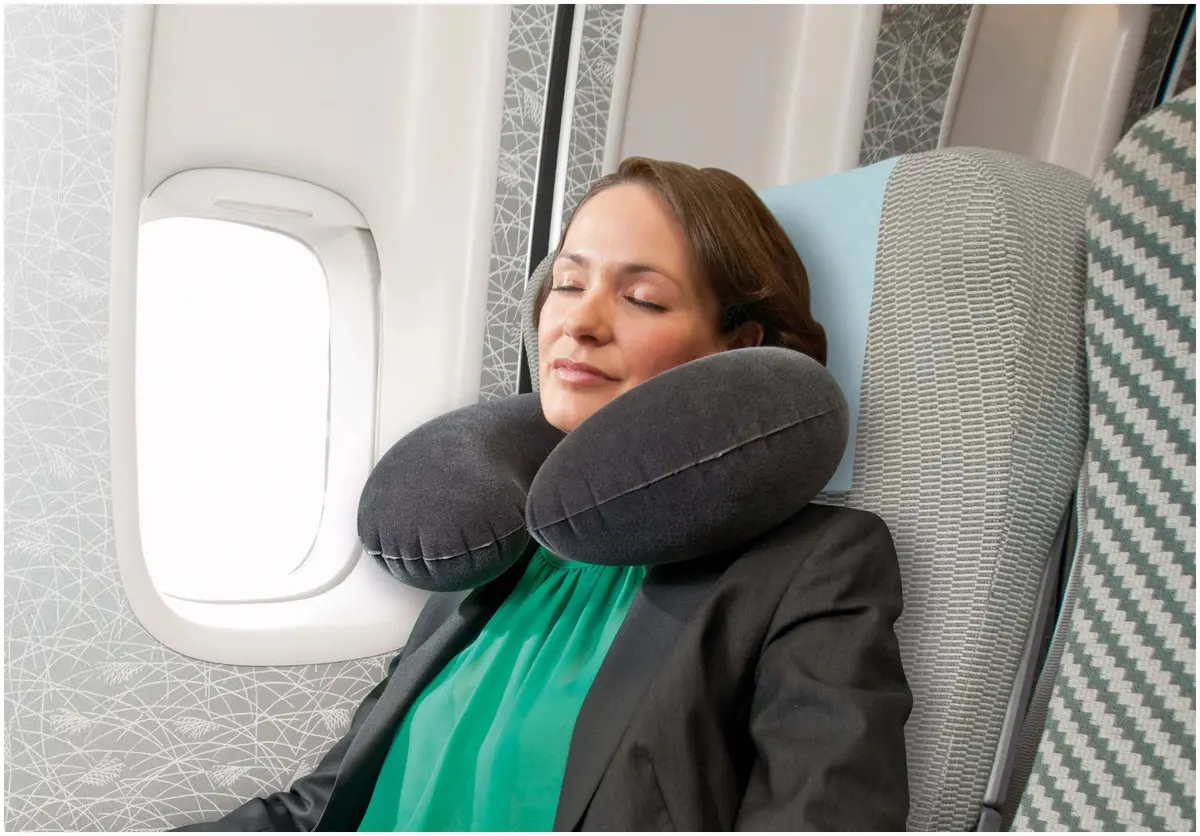
If there’s one purchase that separates seasoned flyers from first-timers, it’s the neck pillow. I’ve tried dozens—everything from inflatable cylinders I picked up in Manila to high-end memory foam models bought at airports in Dubai. The best neck pillows for long haul flights have ergonomic support that actually keeps your head upright without straining your neck.
Why it matters: Sleeping upright in economy is brutal without support. A good pillow reduces jet lag, helps you get actual rest, and prevents that awkward moment when you wake up on a stranger’s shoulder.
Features to look for: Memory foam that molds to your shape, washable covers, or compact inflatable designs if space is tight. Options like the Cabeau Evolution S3 or TRTL travel pillow are affordable yet effective.
Cost range: $20–$40.
Personal tip: On my Seoul to Los Angeles flight, my inflatable pillow popped halfway through. Since then, I always test them before leaving home. If you’re tight on carry-on luggage space, clip the pillow outside your backpack with a travel lock or carabiner.
2. Noise-Cancelling Earplugs or Budget Headphones

You don’t need a $300 pair of Bose headphones to block out the roar of jet engines or the endless hum of chatter. Budget-friendly noise-cancelling earplugs or entry-level headphones work wonders. I first discovered their value on an overnight flight to Buenos Aires, where a crying toddler made me realize just how thin those airline-issued earbuds really are.
Why it matters: Sleep and sanity. Blocking out noise reduces stress, helps you rest, and makes in-flight entertainment far more enjoyable.
Features to look for: Foam earplugs with high noise reduction ratings, or affordable headphones with basic noise-cancelling features. The Anker Soundcore Life Q20s, for example, come in under $50 and perform surprisingly well.
Cost range: $15–$50.
Personal tip: I always carry both—plugs for sleeping, headphones for movies. Once on a flight to Nairobi, my headphones died mid-journey, and I was glad I had backup earplugs in my dopp kit. They weigh almost nothing, yet make an enormous difference.
3. Compression Socks
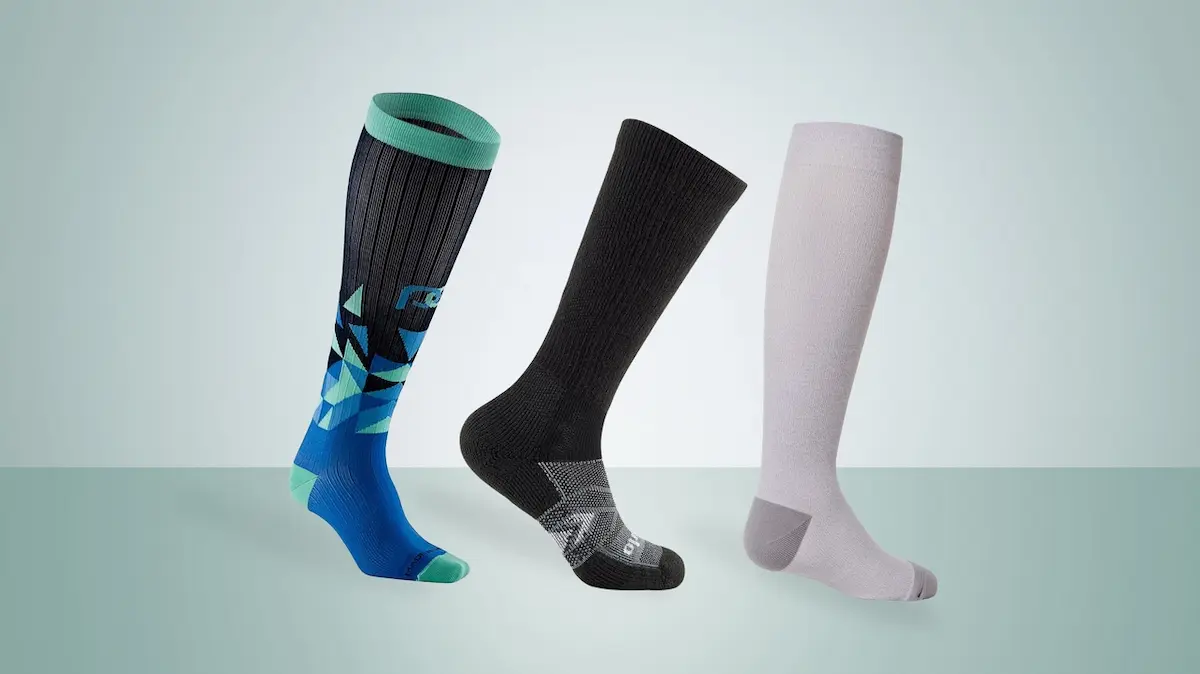
On one of my longest flights—Doha to Sydney, nearly 15 hours—I noticed how many fellow passengers got up mid-flight to stretch because of swollen ankles. That’s when I realized compression socks weren’t just something older travelers wore; they’re essential for anyone on long haul flights.
Why it matters: Sitting for 10+ hours slows circulation, leading to swelling and even more serious risks like deep vein thrombosis. Compression socks improve blood flow, reduce fatigue, and help you feel lighter when you land.
Features to look for: Graduated pressure, breathable fabric, and snug (not overly tight) fit. Brands offering ultrasoft compression travel socks for under $25 are worth it.
Cost range: $15–$30.
Personal tip: I once skipped them on a Toronto–Hong Kong flight and regretted it after struggling to get my shoes back on after landing. Since then, I always pack a pair in my carry-on luggage—right alongside my passport case and travel essentials pouch.
4. Sleep Mask with Contoured Design
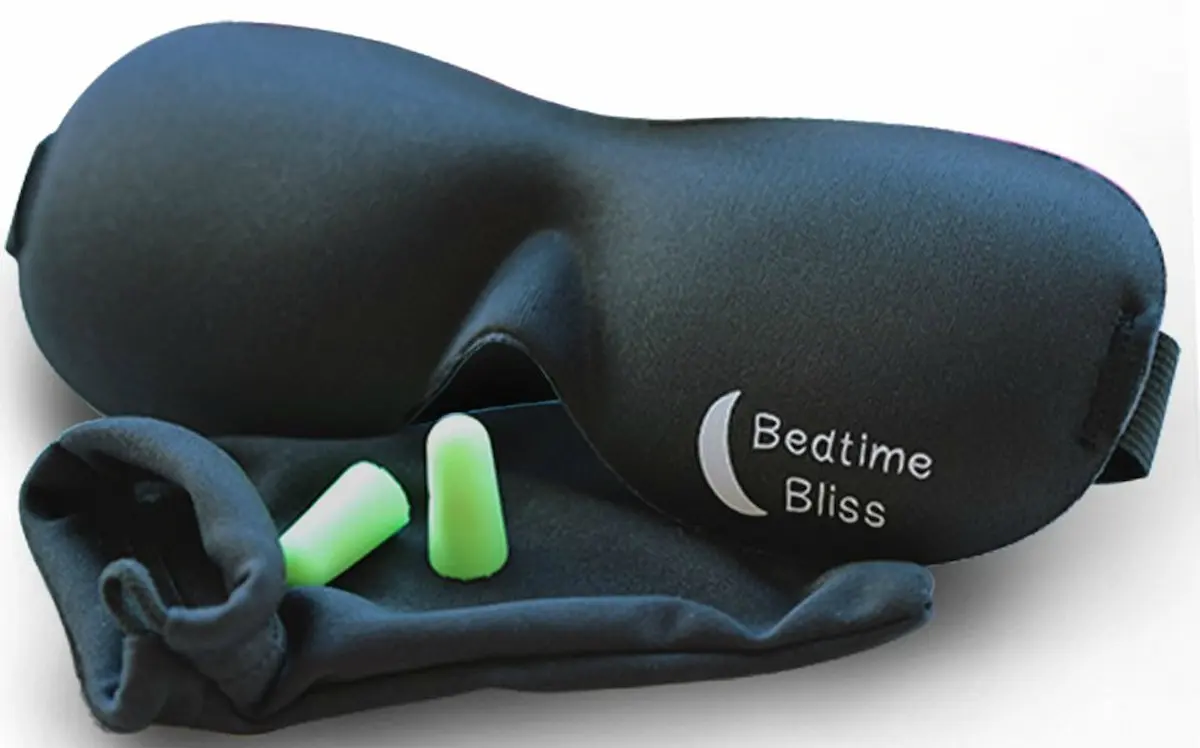
Light can be just as disruptive as noise. On a red-eye from San Francisco to Seoul, the cabin lights kept flicking on for meal service, making it impossible to fall into deep sleep. That’s when I started investing in quality sleep masks.
Why it matters: A contoured mask blocks light without pressing uncomfortably on your eyelids, making it easier to drift off. Unlike flimsy airline masks, the right one feels natural enough to wear for hours.
Features to look for: Memory foam padding, an adjustable strap, and a contoured design that leaves space around your eyes. Models like the Manta Sleep Mask Pro or TRTL Glimpse Sleep Mask combine comfort with durability.
Cost range: $20–$35.
Personal tip: I pair my sleep mask with a memory foam travel pillow and noise-cancellation headphones. That trio has saved me countless times, especially on overnight flights when I need rest before meetings. If you’re wondering what to do on a long haul flight, start by giving yourself the tools to actually sleep.
5. Portable Phone Charger / Power Bank
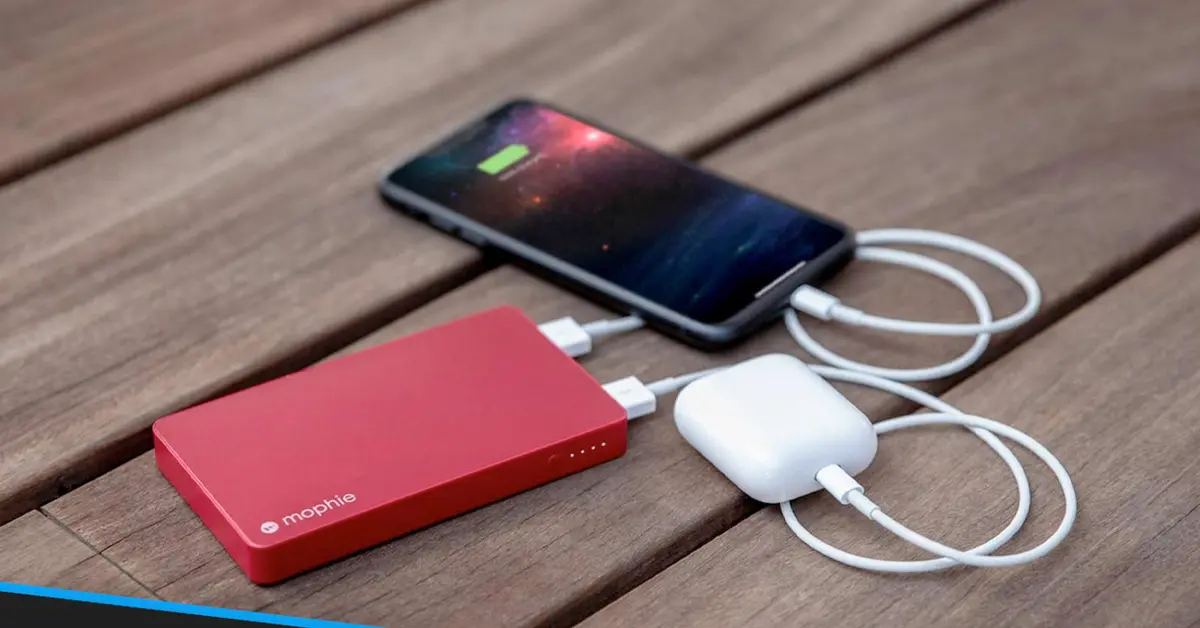
Few things are worse than landing after 10+ hours only to find your phone dead—and no idea where your hotel shuttle pickup point is. I learned this lesson on a late-night arrival in Mexico City, where my dead battery left me wandering Terminal 2 in circles.
Why it matters: A power bank ensures your phone, tablet, or e-reader stays alive for entertainment, navigation, and communication. For long flights with limited USB ports, it’s an absolute essential.
Features to look for: Slim profile, at least 10,000mAh capacity, and fast-charging capability. Many affordable options under $40 now include dual ports so you can charge two devices at once.
Cost range: $20–$40.
Personal tip: I always keep mine in a travel tech organizer so the charging cable doesn’t get tangled with my earbuds. A portable charger is high on my long haul travel essentials packing list—right next to my collapsible water bottle and dopp kit.
6. Reusable Water Bottle with Filter

Hydration is one of the most overlooked aspects of flying. Cabin air is drier than most deserts, and after 12 hours your body feels it. I once flew from Dubai to Manila without drinking much water, and the resulting dehydration hit me harder than the jet lag.
Why it matters: A reusable water bottle with filter not only saves money on overpriced airport drinks but also ensures you stay hydrated throughout the flight. You can fill it after security and top it up mid-journey.
Features to look for: Collapsible or lightweight design, BPA-free material, and built-in filtration for extra safety if you’re traveling through countries with uncertain water quality. The Owala FreeSip Insulated Stainless Steel Water Bottle is a solid option for under $35.
Cost range: $15–$35.
Personal tip: I keep mine clipped to the side of my travel backpack with a carabiner. Having water on hand makes it easier to take vitamins or freshen up mid-flight with a Kiehl’s six-piece travel skincare kit. It’s also a lifesaver when traveling with kids—hydration is key if you’re wondering what to take on a long haul flight with a toddler.
7. Travel Blanket or Shawl
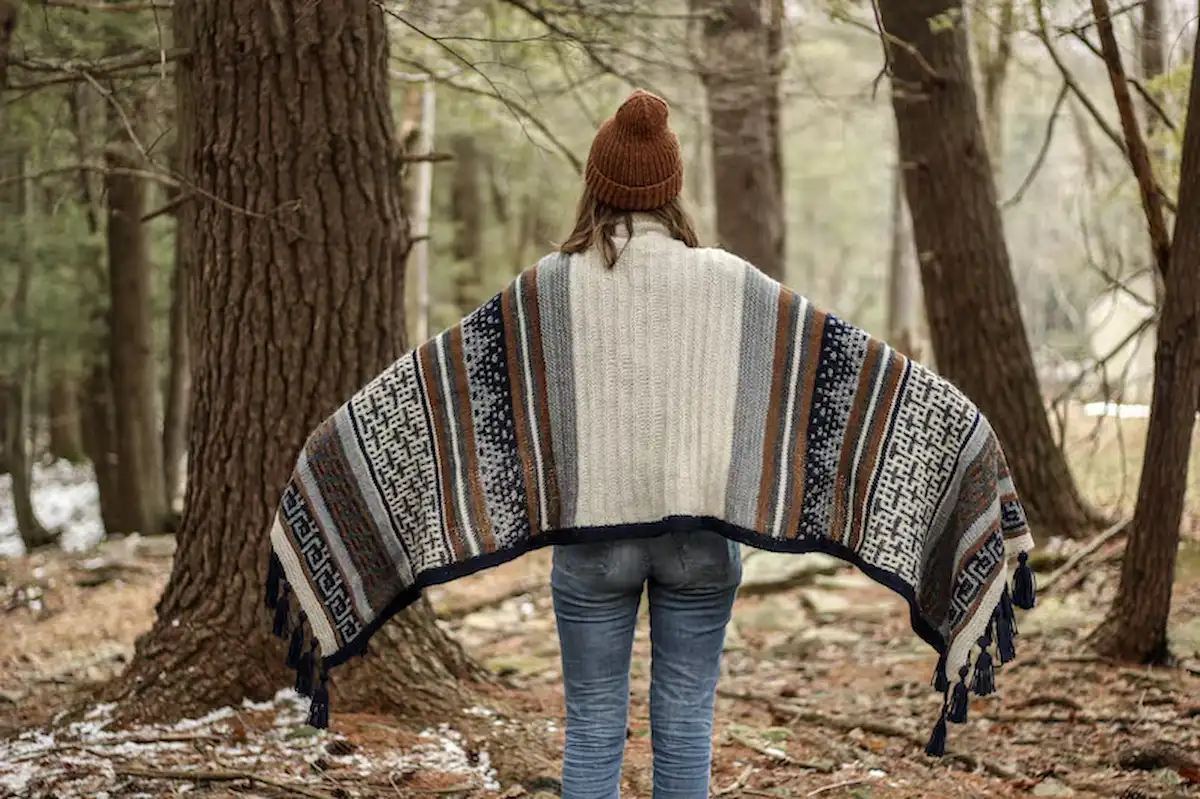
There was a time when I thought the thin airline blanket was “good enough.” Then I took an overnight flight from Paris to Johannesburg where the cabin temperature felt like the Arctic, and I couldn’t stop shivering. Since then, I never fly long haul without my own lightweight travel blanket or shawl.
Why it matters: Cabin temperatures vary wildly, and layering is your best defense. A blanket provides warmth, but a shawl or wrap can also double as a pillow, scarf, or even a modesty cover in airports.
Features to look for: Compact, washable fabrics like microfiber or merino wool. The White+Warren Cashmere Travel Wrap is a favorite among frequent flyers, but there are more affordable versions for $30–$50.
Cost range: $25–$50.
Personal tip: I roll mine tightly into a packing cube so it doesn’t take much room in my carry-on luggage. Once in Morocco, my wrap even doubled as a headscarf when visiting a mosque—proof that long haul travel essentials often have more than one use.
8. Packing Cubes or Compression Bags
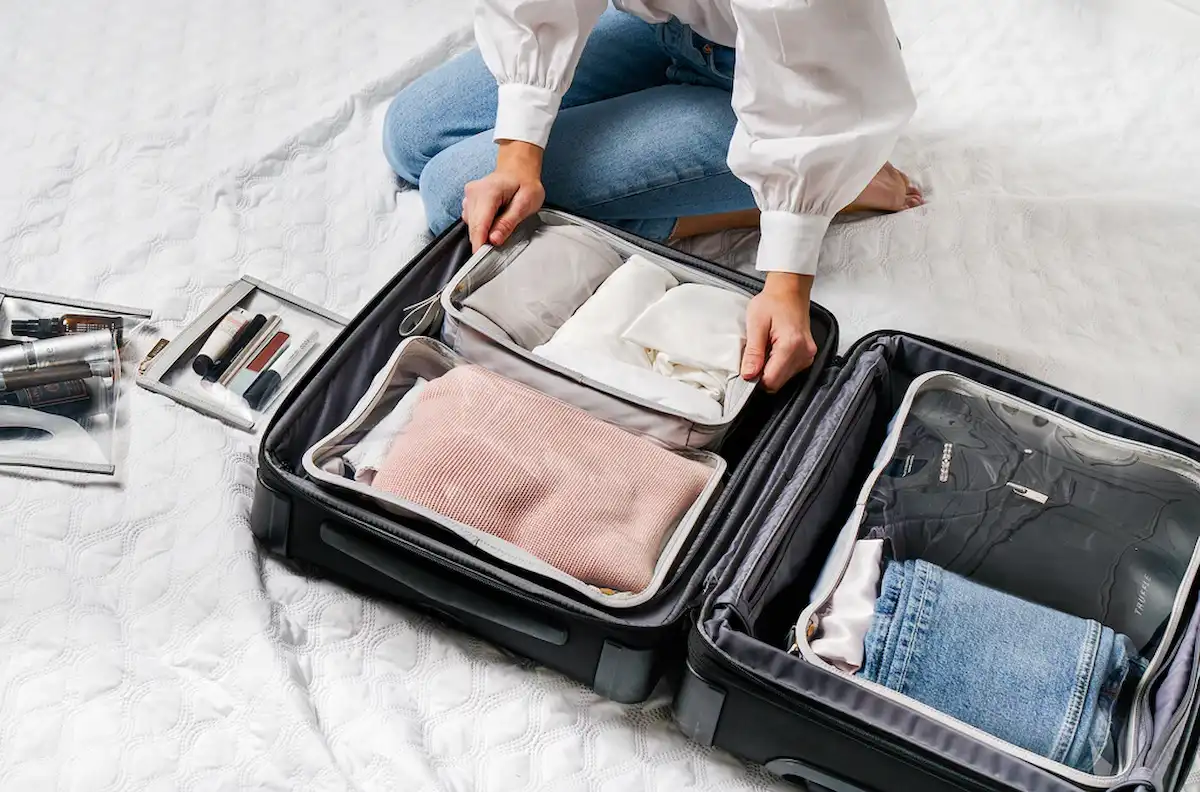
If you’ve ever tried to pull out socks from a chaotic carry-on mid-flight, you’ll understand why I swear by packing cubes. I learned this lesson the hard way on a flight from New Delhi to London when my bag exploded in the overhead bin—clothes everywhere. Never again.
Why it matters: Packing cubes and compression bags keep your belongings organized, reduce space, and make it easier to grab what you need without rummaging.
Features to look for: Durable zippers, breathable mesh, and sizes that fit both checked and carry-on luggage. Compression bags help shrink bulkier items like hoodies or travel pants.
Cost range: $15–$40.
Personal tip: I keep a cube labeled “flight essentials” with my travel pillow, sleep mask, noise-cancelling headphones, and sanitizing wipes. That way, I can pull out just one cube and have everything I need for the flight without disturbing the rest of my bag.
9. Sanitizing Wipes & Hand Spray
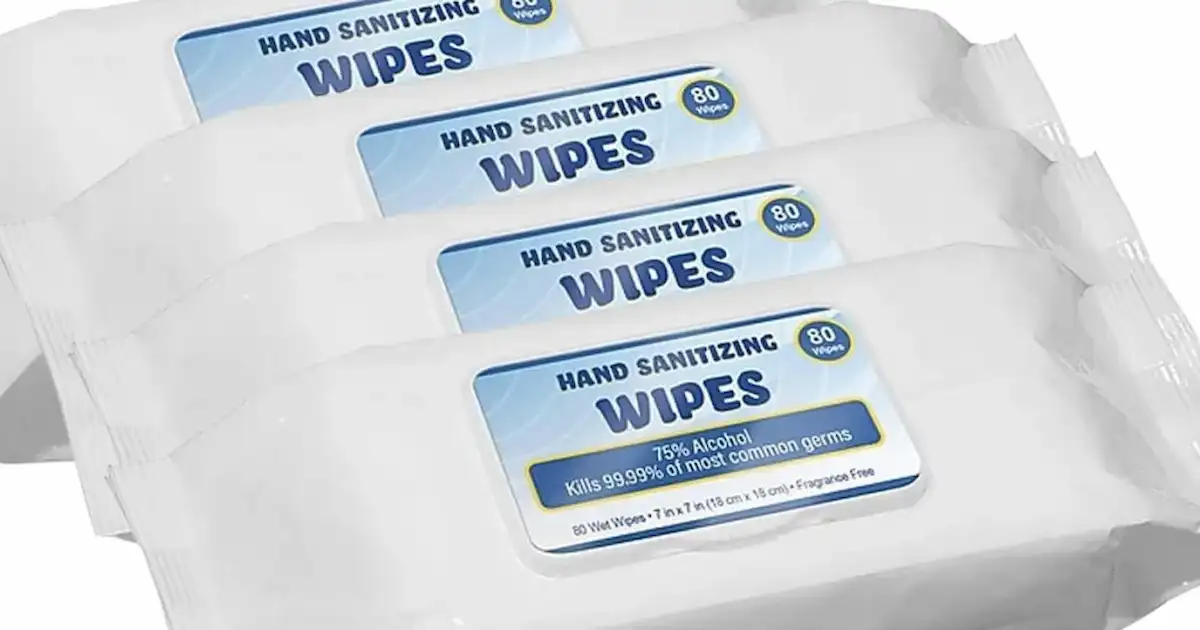
I still remember my flight from Los Angeles to Tokyo in 2019, right before the pandemic, when I wiped down my tray table and the tissue came away gray. Since then, sanitizing wipes and a travel-sized hand spray have become non-negotiable items on my long haul flight packing list.
Why it matters: Airplanes are high-touch environments. Wipes keep tray tables, seatbelts, and armrests clean, while hand spray ensures hygiene before meals or after bathroom visits.
Features to look for: Travel-size packs (under 100ml for TSA compliance), alcohol-based formulas, and quick-dry options. Some even come with soothing aloe to prevent dry skin.
Cost range: $5–$15.
Personal tip: I always stash extras in a dopp kit along with tissues and lip balm. During one flight delay in Istanbul, I ended up sharing my wipes with a family traveling with kids—they were grateful, and I was reminded how small travel accessories for flights can make a big difference in comfort and peace of mind.
10. Collapsible Travel Cup
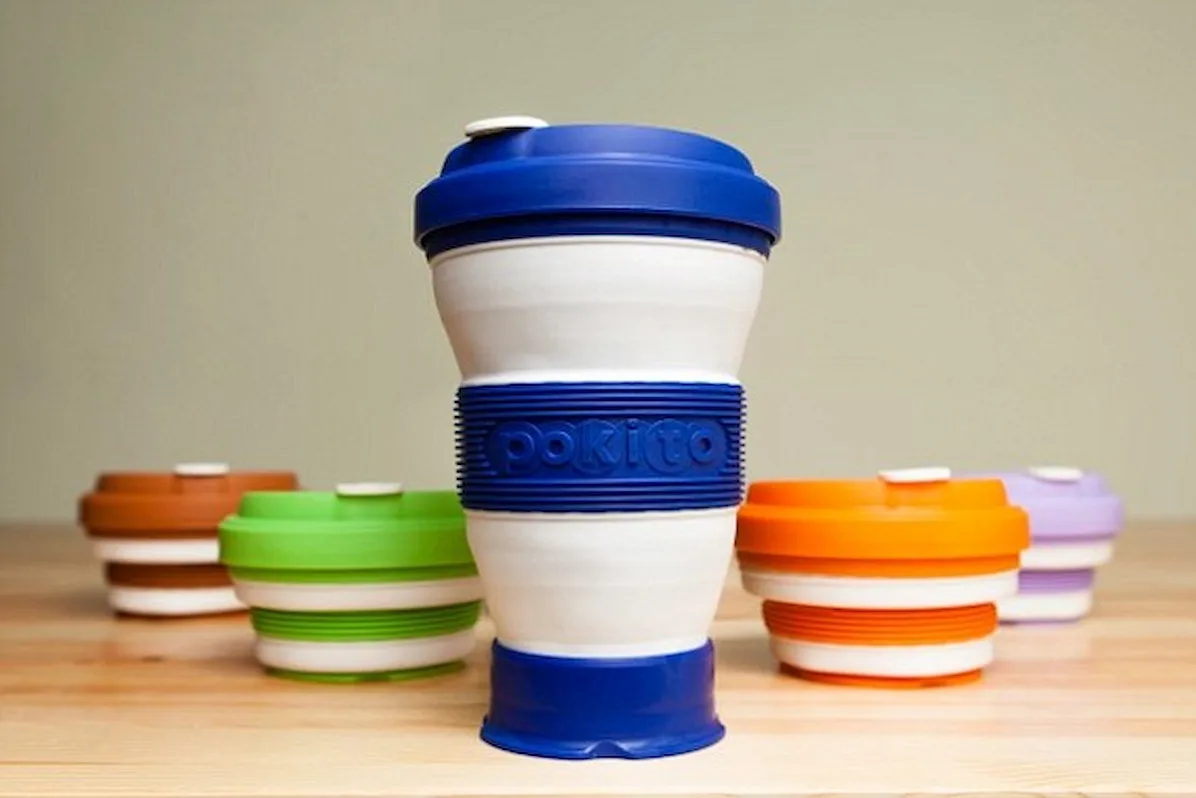
This might sound like an odd accessory until you’ve been in a situation where flight attendants stop offering cups of water because turbulence makes service impossible. It happened to me on a flight to Santiago, and I was left sipping tiny sips from a half-empty bottle.
Why it matters: A collapsible travel cup folds flat into your bag yet pops open for water, coffee, or tea mid-flight. It’s also handy at airports when filling up your collapsible water bottle at a fountain.
Features to look for: Food-grade silicone, leakproof lids, and a size that balances portability with usability (8–12 oz is ideal).
Cost range: $10–$20.
Personal tip: I keep mine in my travel tech organizer so it doesn’t get lost in the shuffle. Once, on a long layover in Singapore, I even used it at a street food stall—it cleaned easily with a sanitizing wipe. For those asking what to take in hand luggage for a long haul flight, this is a surprisingly practical addition.
11. Tablet/Phone Stand
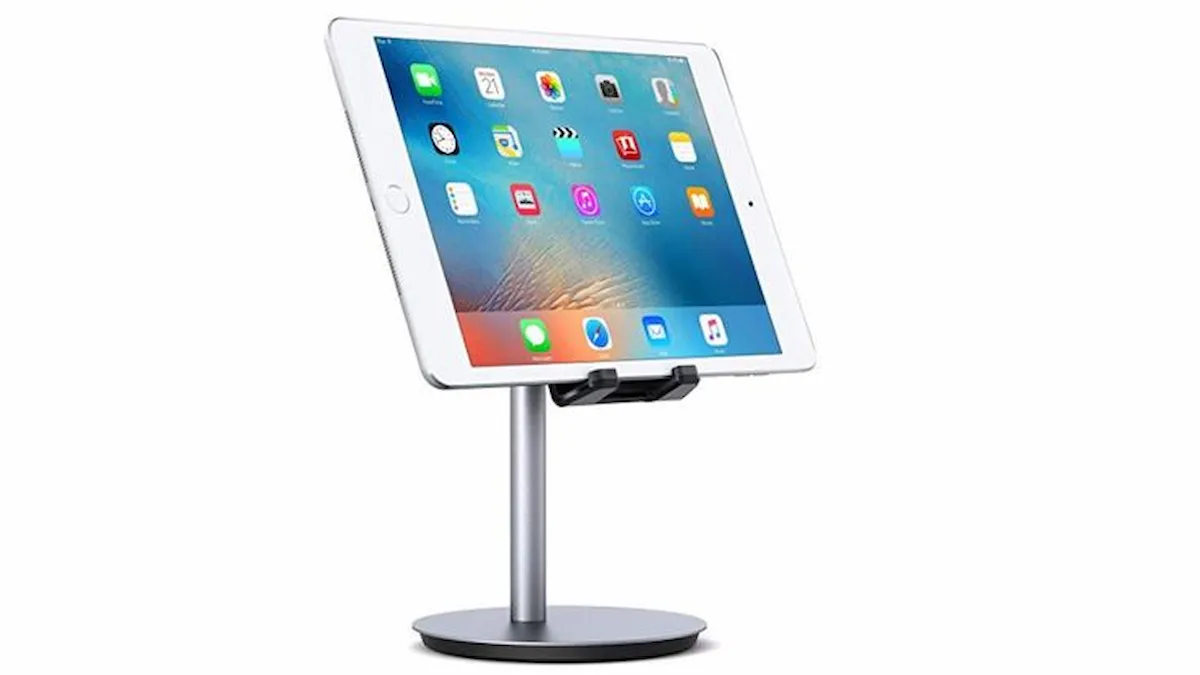
On my first ultra-long flight from Chicago to Hong Kong, I tried balancing my phone against the seatback tray to watch a downloaded movie. Every bump of turbulence sent it tumbling. Lesson learned: a portable tablet or phone stand is worth its small weight in gold.
Why it matters: Most airline seatbacks don’t have a proper holder for devices, especially if you’re traveling on older aircraft. A compact stand gives you hands-free viewing for movies, e-books, or video calls during layovers.
Features to look for: Adjustable angles, foldable design, and lightweight build. Some even attach to the seatback pocket for eye-level viewing.
Cost range: $10–$25.
Personal tip: I keep mine tucked inside my travel tech organizer with my charging cables. If you’re wondering what to carry while travelling by plane for entertainment, this is one of the smartest, cheapest hacks.
12. Travel Footrest Hammock

I didn’t discover the footrest hammock until a trip from Toronto to Dubai, and I wish I had sooner. My legs used to ache after hours in cramped economy seating, but this simple accessory changed everything.
Why it matters: It hooks onto the tray table and creates a sling for your feet, improving circulation and reducing lower back pressure. It’s a budget-friendly alternative to premium economy upgrades.
Features to look for: Sturdy straps, padded base, and adjustable height for different seats.
Cost range: $20–$35.
Personal tip: I use it on overnight flights paired with ultrasoft compression travel socks. Together, they keep my legs fresh even on 14-hour hauls. Airlines don’t ban them, but not every passenger knows they exist—so if you’ve ever asked, “Do airlines allow travel footrests?”, the answer is usually yes, as long as you use them considerately.
13. Snack Organizer / Reusable Pouch
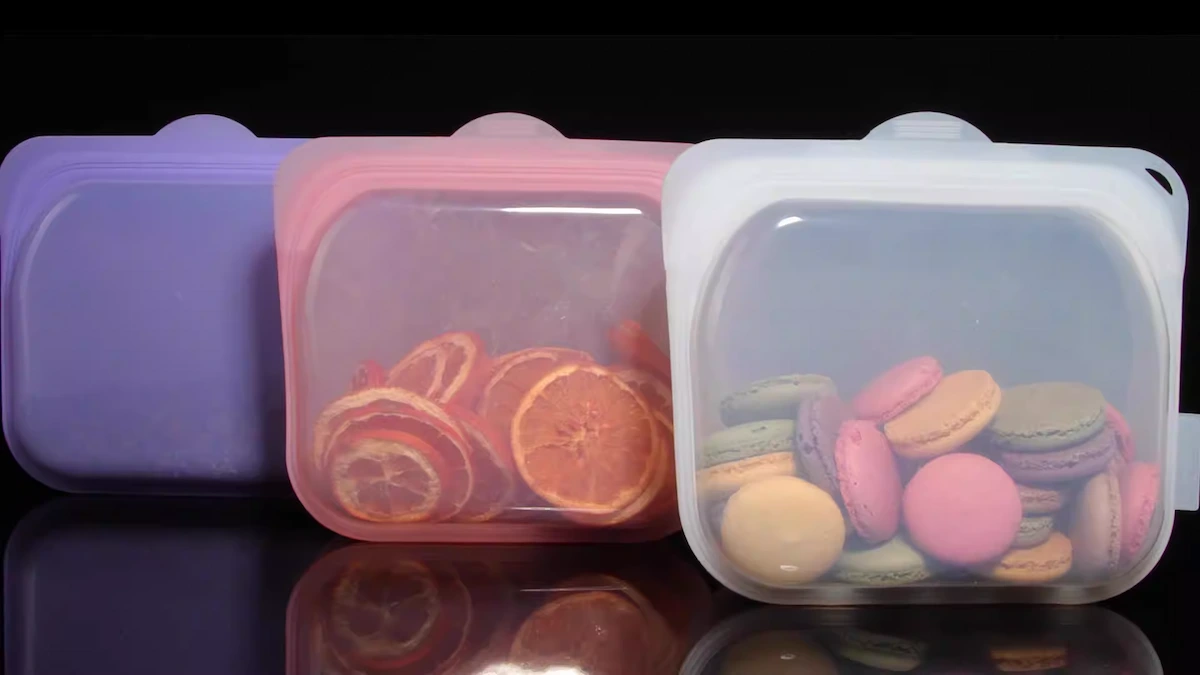
Airline meals can be unpredictable. Sometimes you get hearty servings; other times, you’re left with a stale roll and a mystery sauce. On a 10-hour flight to Lima, I once packed my own snacks in a reusable pouch, and it saved me from both hunger and disappointment.
Why it matters: Bringing your own snacks means healthier options, especially if you have dietary restrictions. A reusable pouch keeps everything organized, eco-friendly, and TSA-compliant.
Features to look for: Leakproof, resealable, and washable materials. Silicone pouches are lightweight and reliable.
Cost range: $8–$20.
Personal tip: I usually pack nuts, dried fruit, and protein bars. Parents often ask me what to take on a long haul flight with a toddler—snacks in small pouches are lifesavers for keeping kids calm mid-flight. And yes, reusable containers pass through security as long as food is solid.
14. Portable Toothbrush Kit & Toiletries

Few things feel better mid-flight than brushing your teeth. I learned this after a 12-hour journey to Tokyo, where freshening up before landing made me feel instantly more human.
Why it matters: Personal hygiene is one of the easiest ways to boost comfort on long flights. A compact kit helps you wash up without lugging your full bathroom.
Features to look for: Carry-on appropriate bottles (under 100ml), folding toothbrushes, and small toiletry bags. Brands even sell pre-packed Kiehl’s travel skincare kits designed for flights.
Cost range: $10–$25.
Personal tip: I keep my kit in a dopp kit with hand sanitizer and lip balm. If you’re curious about what travel accessories do I need for a long haul flight, this should be high on your list. Fresh breath, clean hands, and moisturized skin make jet lag more manageable.
15. Travel Journal or Kindle
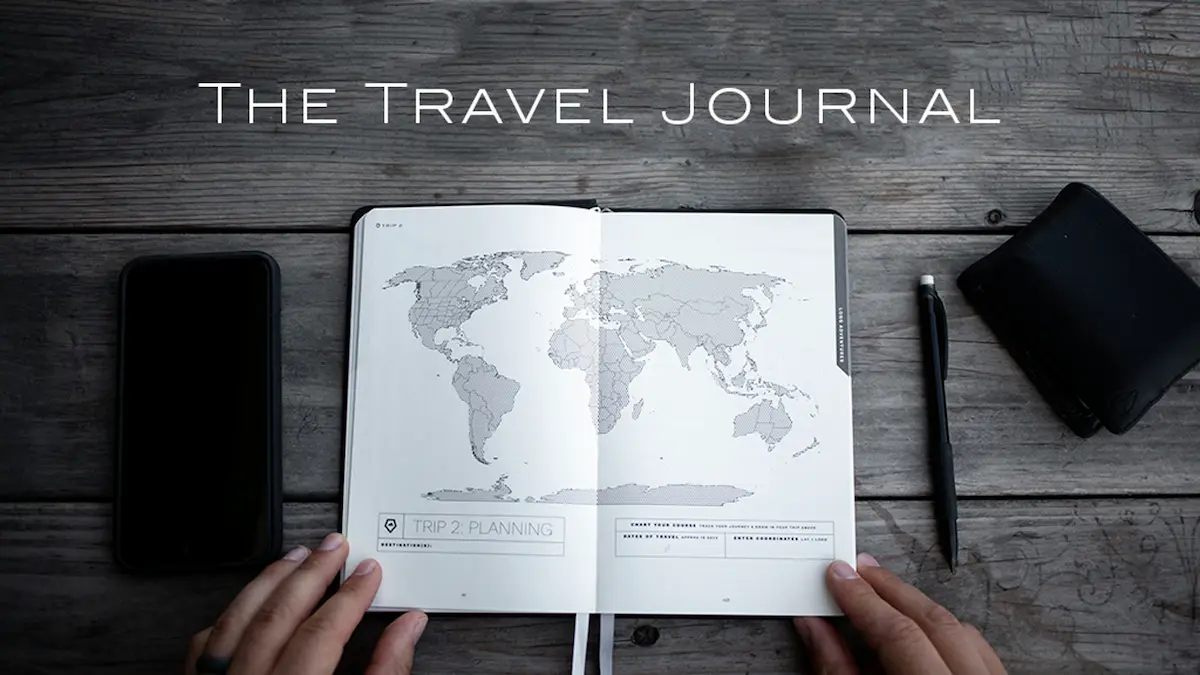
Not every long flight is about movies and podcasts. Sometimes, I find that disconnecting is the real luxury. On a flight from Madrid to Buenos Aires, I spent three hours journaling about my travels—and those notes are more valuable to me now than any film I might have watched.
Why it matters: A travel journal helps you reflect, plan, or simply pass the time. If you prefer digital, a Kindle or e-reader packs thousands of books into a slim device—perfect for those who ask, “What to do on a long haul flight?”
Features to look for: For journals, lightweight notebooks with durable covers. For e-readers, glare-free screens and long battery life.
Cost range: $15–$50.
Personal tip: I carry both. A journal for personal notes, a Kindle for entertainment. Once, during a flight delayed in Istanbul, I was grateful for my Kindle stocked with novels. Entertainment is just as much a part of your long haul flight essentials as comfort items.
Health & Comfort Benefits of Using Travel Accessories
Even the most seasoned travelers underestimate just how much a few small items can change the way your body feels after a long haul flight. The accessories listed here aren’t just about convenience; they directly impact your health and well-being in the air.
Better sleep quality: A supportive memory foam pillow, a contoured sleep mask, and a lightweight travel blanket can make the difference between fragmented dozing and actual rest. On my second trip to Japan, I learned that combining these three made me feel almost human after a 13-hour flight.
Circulation and wellness: Compression socks, hydration from a reusable water bottle, and the ability to stretch with a footrest hammock prevent swelling, reduce the risk of deep vein thrombosis, and help you land refreshed instead of groggy.
Stress reduction and sanity: Entertainment tools like a tablet stand, organization from packing cubes, and hygiene essentials like wipes make the journey smoother. Little details—like being able to freshen up mid-flight with a toothbrush kit—lift your mood more than you’d expect.
In my own travels, these accessories have been the line between arriving jet-lagged and cranky, or landing ready to explore. They won’t eliminate fatigue entirely, but they make it manageable—and for long-haul flyers, that’s everything.
Tips for Packing and Using Travel Accessories Efficiently
Over the years, I’ve realized that knowing what travel accessories do I need is only half the battle—how you pack and use them makes just as much difference. I’ve had trips where I brought the right travel accessories for long haul flights but buried them deep in my checked luggage… completely useless when I actually needed them in the air. These lessons came from trial and error, countless repackings in airport lounges, and learning to streamline my carry-on strategy.
1. Keep Essentials in Your Carry-On
Anything that impacts comfort, health, or hygiene should always go in carry-on luggage, not checked bags. I once packed my compression socks in my checked suitcase on a 10-hour flight to Amsterdam, and my ankles swelled so badly I couldn’t wear my shoes the next day. Don’t make that mistake.
Carry-on must-haves:
- Travel Pillow (memory foam or inflatable)
- Sleep Mask & Earplugs/Headphones
- Sanitizing Wipes & Hand Spray
- Portable Charger & Cables
- Compression Socks
- Reusable Water Bottle (empty through security, refill later)
- Toothbrush Kit & Skincare Essentials
2. Multipurpose Hacks Save Space
The smartest accessories are the ones that serve multiple purposes. For instance, my merino wool travel hoodie doubles as a lightweight blanket, while my White+Warren travel wrap has been a scarf, shawl, and even a pillow in a pinch.
Examples of multipurpose use:
| Accessory | Multipurpose Hack | Why It Helps |
|---|---|---|
| Travel Blanket/Shawl | Blanket, scarf, pillow, modesty cover | Saves packing separate items |
| Collapsible Cup | Water, coffee, snacks on-the-go | TSA-friendly, takes no space |
| Packing Cubes | Flight essentials cube, laundry divider | Faster access & organization |
| Travel Journal | Notes, itinerary planning, entertainment | No need for bulky planners |
3. Test Gear Before You Fly
I can’t count the number of travelers I’ve seen struggling with brand-new gadgets mid-flight. One passenger beside me once tried inflating a pillow for the first time at 35,000 feet—it wouldn’t hold air, and she was miserable the rest of the trip. Always test your haul flight accessories at home. Wear your noise cancellation headphones, inflate your pillow, try on your ultrasoft compression socks, and make sure your collapsible water bottle doesn’t leak.
4. Create a Flight Essentials Pouch
I now keep a small pouch—essentially a mini survival kit—that I slip into the seatback pocket as soon as I board. Inside are my sleep mask, sanitizing wipes, travel locks, noise-cancelling earplugs, and portable charger. This saves me from digging through the overhead bin during turbulence.
Quick packing list for your pouch:
- Manta or TRTL Sleep Mask
- Compression Socks (folded tightly)
- Hand Spray & Wipes
- Earplugs & Budget Headphones
- Collapsible Cup
- Travel Journal or Kindle
5. Balance Affordability with Comfort
Affordable doesn’t mean compromising on quality. I’ve found reliable long haul travel essentials in local shops in Bangkok, outdoor gear stores in Colorado, and even duty-free shops in Dubai. The key is looking for durability and practicality rather than just the cheapest option. Remember, a $25 pillow that lasts five years is a smarter buy than replacing a $10 one every trip.
Final Thoughts
After years of crisscrossing continents, I’ve learned that the difference between a miserable flight and a manageable one often comes down to preparation. The right travel accessories for long haul flights don’t need to be expensive or complicated—they just need to be smart, practical, and affordable. From compression socks that keep your legs feeling light to a reusable water bottle that keeps you hydrated, these items truly redefine what it means to travel comfortably in economy.
Affordable doesn’t mean cutting corners. It means choosing gear that lasts, items you’ll actually use, and accessories that solve real in-flight problems. Whether it’s blocking out noise with budget-friendly headphones, freshening up with a toothbrush kit, or keeping your snacks organized in a reusable pouch, each of these long haul flight essentials helps make the journey smoother.
I always tell fellow travelers: test two or three new accessories on your next trip. See how much easier it feels to rest, stay organized, or simply feel fresh when you land. For me, once I invested in the right gear, I stopped dreading those 12+ hour hauls. Instead, I started using them as time to rest, reset, and even enjoy the journey itself.
So next time you’re packing and wondering what to carry while travelling by plane, remember that small investments in comfort and wellness will pay off tenfold by the time your plane touches down.
Frequently Asked Questions
1. What’s the single most important accessory for long flights?
From my experience, a supportive travel pillow is the game-changer. Pair it with a sleep mask and you’ve already improved your chances of real rest in economy.
2. Are cheap travel pillows worth it?
Some are, some aren’t. Inflatable models are good for saving space, but memory foam pillows—like the Cabeau Evolution S3—offer far better neck support. The key is testing before you fly.
3. How many accessories should I bring in my carry-on?
Stick to the essentials: pillow, sleep mask, headphones, wipes, charger, water bottle, and toiletries. That covers 90% of your in-flight comfort.
4. Do airlines allow travel footrests?
Yes, in most cases. I’ve used a footrest hammock on flights with no issue, as long as it doesn’t block aisles or disturb other passengers.
5. Can I bring snacks in reusable pouches through security?
Absolutely, as long as they’re solid (nuts, fruit, bars). Liquids or spreads may get flagged, so avoid peanut butter jars.
6. What are the best airplane accessories for long flights?
Based on personal experience: neck pillow, compression socks, portable charger, reusable water bottle, and sanitizing wipes top the list.
7. What is the best thing to wear on a long haul flight?
Go for breathable layers—like a merino wool hoodie or lightweight travel pants—paired with compression socks for circulation.
8. How do you survive a 12-hour flight in economy?
Pack strategically: stay hydrated, walk around, and use accessories like a sleep mask, neck pillow, and footrest hammock. I also recommend bringing your own snacks.
9. What are the comfort items for international flights?
Noise-cancelling earplugs, a shawl or travel blanket, skincare essentials, and a collapsible water bottle are my top comfort picks.
10. How do you prepare for a 16-hour flight?
Test your accessories before flying, pack a dedicated flight essentials pouch, wear comfortable clothing, and plan hydration breaks. For me, breaking the flight into “chapters” (meals, movies, naps, journaling) makes it mentally easier.


